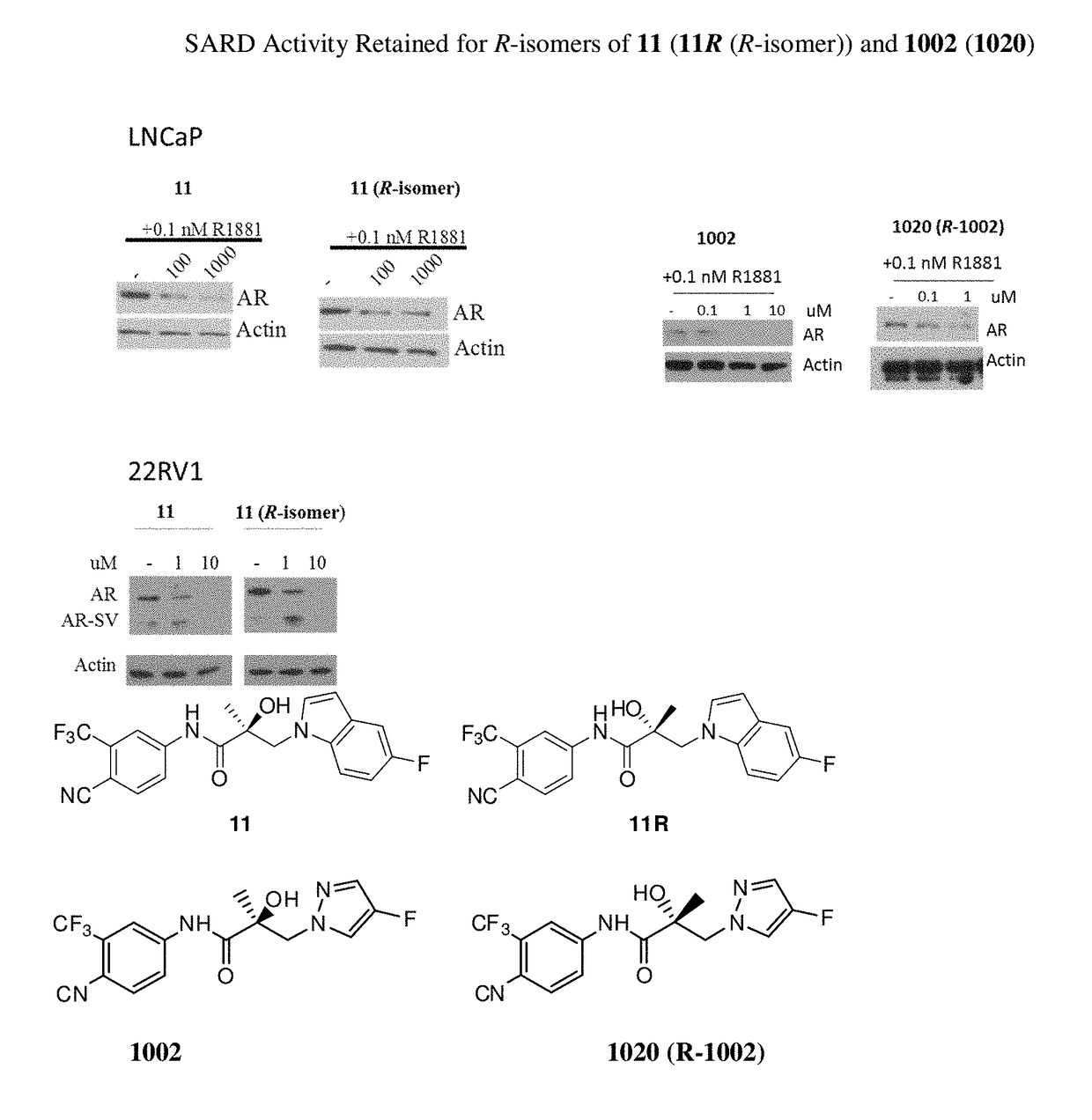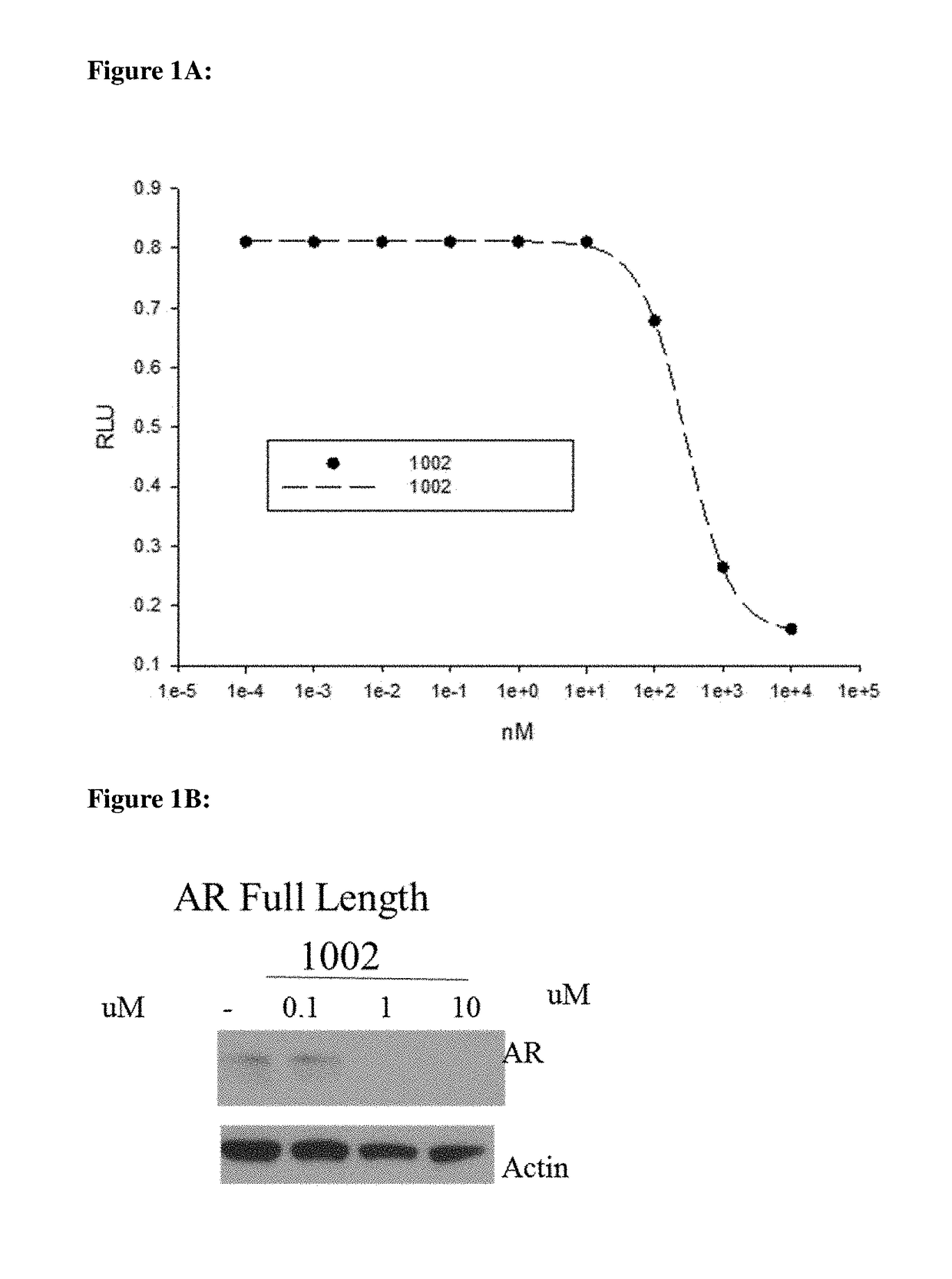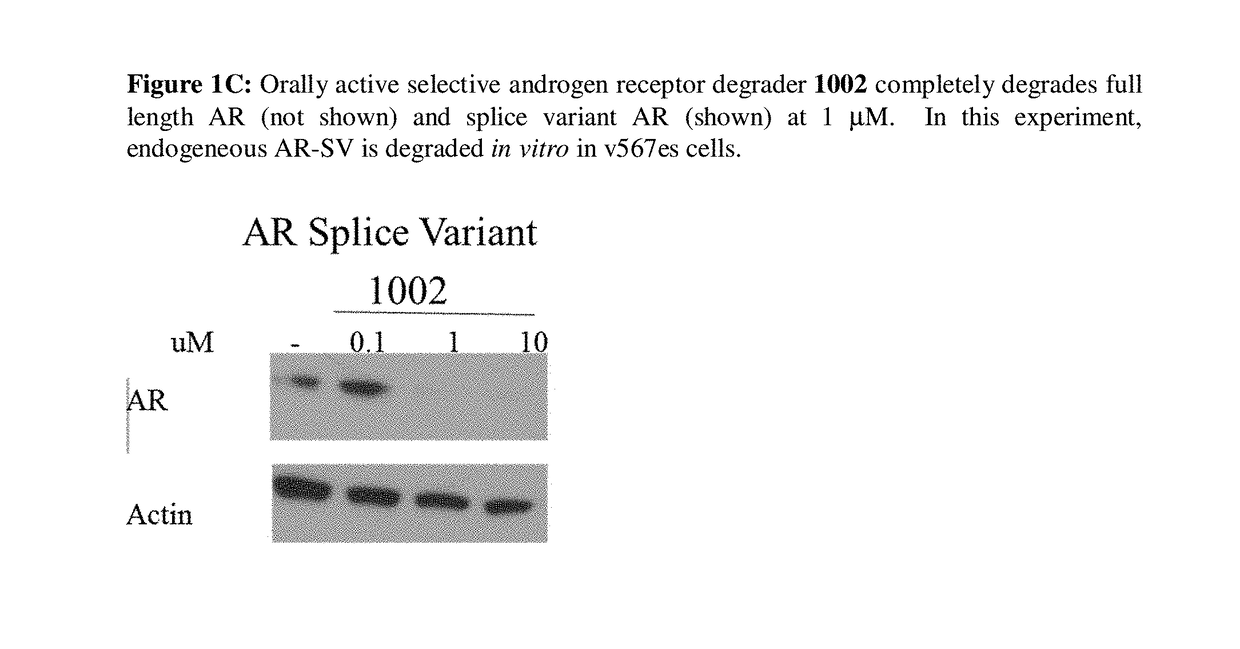Selective androgen receptor degrader (SARD) ligands and methods of use thereof
a selective androgen receptor and degrader technology, applied in the field of selective androgen receptor degrader, can solve the problems of inability to antagonize ar-svs in these tnbc's, lack of primary breast cancer hormone and kinase therapeutic targets for other types of primary breast cancer, undesirable antiandrogens, etc., and achieve the effect of reducing the levels of ar-full length and the level of ar-splice variants
- Summary
- Abstract
- Description
- Claims
- Application Information
AI Technical Summary
Benefits of technology
Problems solved by technology
Method used
Image
Examples
example 1
Synthesis of SARDs
Synthesis of Intermediates 9-10
[0597]
(2R)-1-Methacryloylpyrrolidin-2-carboxylic acid (2)
[0598]D-Proline (1, 14.93 g, 0.13 mol) was dissolved in 71 mL of 2 N NaOH and cooled in an ice bath. The resulting alkaline solution was diluted with acetone (71 mL). An acetone solution (71 mL) of methacryloyl chloride (13.56 g, 0.13 mol) and 2 N NaOH solution (71 mL) were simultaneously added over 40 min to the aqueous solution of D-proline in an ice bath. The temperature of the mixture was kept at 10-11° C. during the addition of the methacryloyl chloride. After stirring (3 hours (h), room temperature (RT)), the mixture was evaporated in vacuo at a temperature of 35-45° C. to remove acetone. The resulting solution was washed with ethyl ether and was acidified to pH 2 with concentrated HCl. The acidic mixture was saturated with NaCl and was extracted with EtOAc (100 mL×3). The combined extracts were dried over Na2SO4, filtered through Celite®, and evaporated in vacuo to give t...
example 2
Octanol-Water Partition Coefficient (Log P)
[0792]Log P is the log of the octanol-water partition coefficient, commonly used early in drug discovery efforts as a rough estimate of whether a particular molecule is likely to cross biological membranes. Log P was calculated using ChemDraw Ultra version is 12.0.2.1016 (Perkin-Elmer, Waltham, Mass. 02451). Calculated Log P values are reported in Table 1 in the column labeled ‘Log P (−0.4 to +5.6)’. Lipinski's rule of five is a set of criteria intended to predict oral bioavailability. One of these criteria for oral bioavailability is that the Log P is between the values shown in the column heading (−0.4 (relatively hydrophilic) to +5.6 (relatively lipophilic) range), or more generally stated <5. One of the goals of SARD design was to improve water solubility. The monocyclic templates of this invention such as the pyrazoles, pyrroles, etc. were more water soluble than earlier analogs. For instance, one may compare the Log P values of SARDs ...
example 3
[0793]Methods:
[0794]HEK-293 cells were transfected with the indicated receptors and GRE-LUC and CMV-renilla luc. Cells were treated 24 h after transfection and luciferase assay performed 48 h after transfection. The SARD compounds did not inhibit transactivation of receptors other than AR until 10 μM. The experimental method is described below.
[0795]Human AR was cloned into a CMV vector backbone and was used for the transactivation study. HEK-293 cells were plated at 120,000 cells per well of a 24 well plate in DME+5% csFBS. The cells were transfected using Lipofectamine (Invitrogen, Carlsbad, Calif.) with 0.25 μg GRE-LUC, 0.01 μg CMV-LUC (renilla luciferase) and 25 ng of the AR. The cells were treated 24 h after transfection and the luciferase assay performed 48 h after transfection. Transactivation results were based on measured luciferase light emissions and reported as relative light unit intensity (RLU). The assay was run in antagonist mode (IC50) using kno...
PUM
| Property | Measurement | Unit |
|---|---|---|
| Molar density | aaaaa | aaaaa |
| Molar density | aaaaa | aaaaa |
| Molar density | aaaaa | aaaaa |
Abstract
Description
Claims
Application Information
 Login to View More
Login to View More - R&D
- Intellectual Property
- Life Sciences
- Materials
- Tech Scout
- Unparalleled Data Quality
- Higher Quality Content
- 60% Fewer Hallucinations
Browse by: Latest US Patents, China's latest patents, Technical Efficacy Thesaurus, Application Domain, Technology Topic, Popular Technical Reports.
© 2025 PatSnap. All rights reserved.Legal|Privacy policy|Modern Slavery Act Transparency Statement|Sitemap|About US| Contact US: help@patsnap.com



